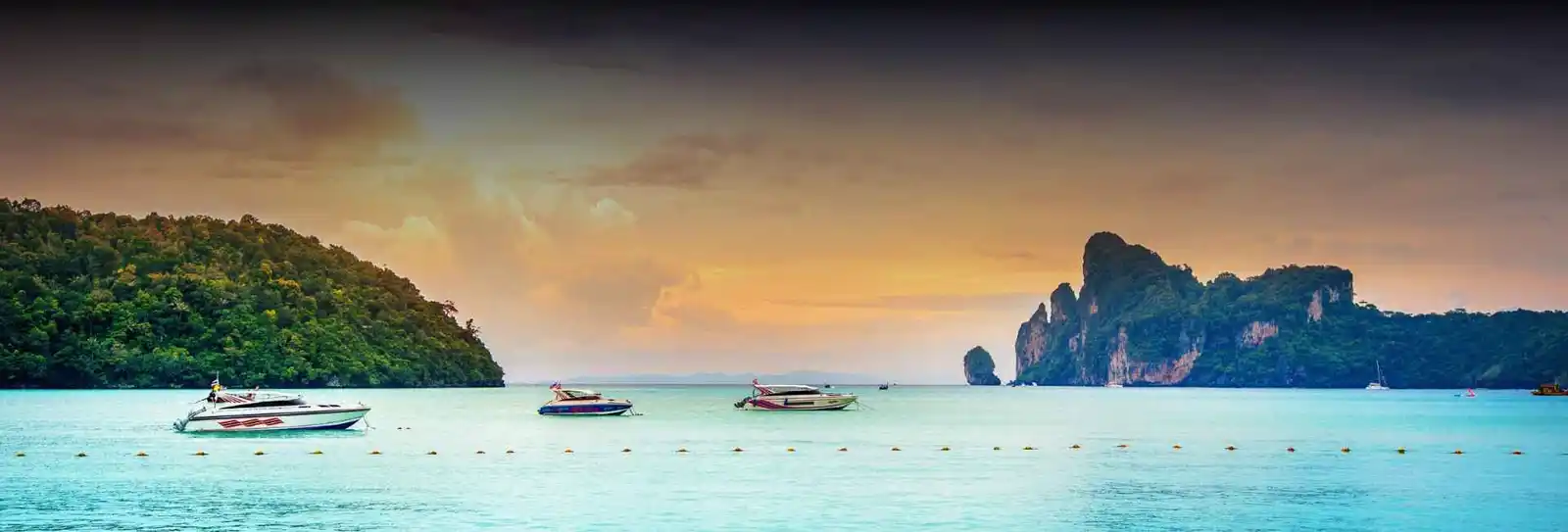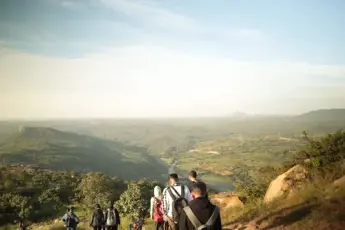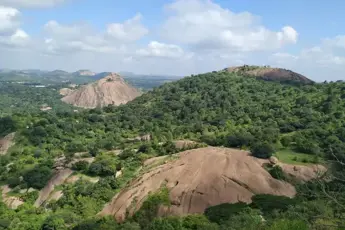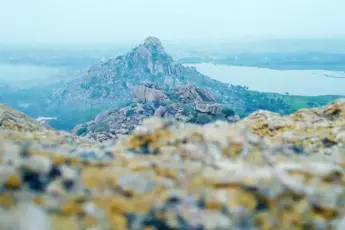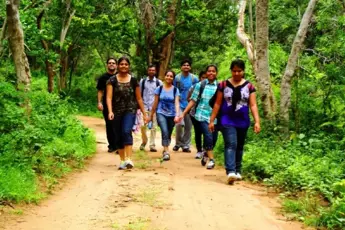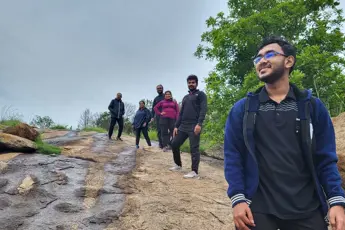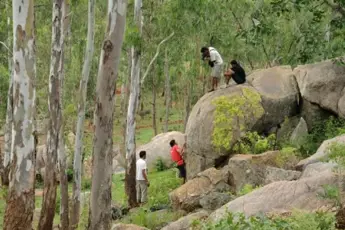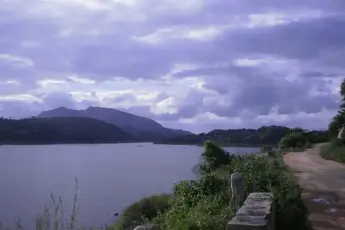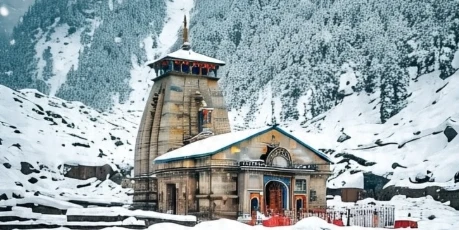
The Panch Kedar Yatra stands as one of the most spiritually significant pilgrimages in the Indian Himalayas. This sacred journey takes devotees through five ancient temples dedicated to Lord Shiva, each nestled in the breathtaking landscapes of Uttarakhand. At escape2explore, we've guided countless spiritual seekers through this transformative Himalayan trek, and I'm excited to share everything you need to know about this divine pilgrimage. The Panch Kedar temples aren't just religious sites, they're living monuments telling the tale of Hindu mythology, specifically the aftermath of the Mahabharata war. As per legend, the Pandavas sought the divine blessing of Lord Shiva to free themselves from the guilt of having killed their own relatives.To escape their pursuit, Shiva assumed the shape of a bull and vanished into the earth, with distinct body parts appearing at these five revered locations. This comprehensive guide will walk you through each temple in the Panch Kedar circuit, provide practical information for planning your yatra, the best times to visit, and how to make the most of this life-changing spiritual adventure in the Himalayas.The Five Temples of Panch Kedar1. Kedarnath: The Primary TempleKedarnath, the most famous among the Panch Kedar temples, is located at an impressive height of 3,583 meters in the Rudraprayag district. According to mythology, the hump of Lord Shiva in his bull form appeared here. The journey to Kedarnath involves a challenging yet rewarding 16-kilometre trek from Gaurikund. The ancient stone temple against the backdrop of the towering Kedarnath peak creates a scene of unparalleled spiritual grandeur.The temple remains open only for six months a year, typically from April/May to October/November, as heavy snowfall makes it inaccessible during winter. During this time, the deity symbolically relocates to Ukhimath. Inside the temple, the Swayambhu (self-manifested) lingam takes centre stage, drawing devotees from across the world who come seeking blessings and spiritual cleansing.2. Tungnath: The Highest Shiva TempleAt an altitude of 3,680 meters in the Rudraprayag district, Tungnath is celebrated as the highest Shiva temple on the planet. Legend says Lord Shiva's arms appeared here. The trek to Tungnath begins at Chopta, often called the "Mini Switzerland of India" due to its stunning meadows. The 3.5-kilometre trek is moderate in difficulty but enormous in spiritual rewards. As you climb, the panoramic views of the Himalayan peaks grow increasingly magnificent.Just as Kedarnath, Tungnath is available for visitors exclusively during the summer. The temple's architecture follows the North Indian style with intricate stone carvings that have withstood the test of time and harsh mountain weather.3. Rudranath: The Face of DivinityRudranath, the site where the visage of Lord Shiva manifested, is located in the Chamoli district at an elevation of 2,286 meters. The temple is surrounded by dense forests and alpine meadows, making it one of the most challenging temples to reach in the Panch Kedar circuit. The trek to Rudranath can start from several points – Sagar, Gopeshwar, or Mandal – with the trail stretching between 20-24 kilometers depending on your starting point. The path takes you through rhododendron forests, pristine streams, and remote villages rarely visited by mainstream tourists.Within the temple lies a natural rock face that bears a likeness to Lord Shiva's appearance. The serene atmosphere and relatively fewer visitors make Rudranath perfect for those seeking deep meditation and solitude.4. Madhyamaheshwar: The Middle of CreationIn the Ukhimath area of Kedarnath, at an altitude of 3,289 meters, lies Madhyamaheshwar, where Lord Shiva's navel and stomach (madhya) manifested. Nestled in a valley and bordered by lush forests, the temple boasts magnificent vistas of peaks including Chaukhamba and Neelkanth. The journey to Madhyamaheshwar begins at Uniana and involves an 18-kilometer trek through some of Uttarakhand's most pristine landscapes. The route traverses delightful Himalayan settlements where it feels as if time has halted.Inside the temple, a unique navel-shaped lingam represents Lord Shiva. The surrounding area features several holy kunds (water springs) where pilgrims traditionally bathe before entering the temple.5. Kalpeshwar: The Divine HairKalpeshwar, which is the final temple in the Panch Kedar pilgrimage, represents the hair (jata) of Lord Shiva. Located at a comparatively lower altitude of 2,200 meters in the Urgam Valley, Kalpeshwar remains accessible throughout the year. The journey involves a short 2-kilometre trek from Urgam village, making it the most accessible of all Panch Kedar temples. Inside the small cave temple, a matted lock of hair represents Lord Shiva, and the intimate setting creates a uniquely personal spiritual experience.The temple's year-round accessibility means it often serves as both the starting and concluding point for pilgrims undertaking the complete Panch Kedar Yatra.Planning Your Panch Kedar YatraBest Time to VisitThe optimal time for the Panch Kedar Yatra falls between May and June, and September to early November. During these months, the weather remains relatively stable, and all five temples stay open for devotees.Avoid the monsoon season (July-August) as heavy rainfall can trigger landslides and make the trails dangerous. Winter (December-March) sees most temples closed due to heavy snowfall, with only Kalpeshwar remaining accessible.Spring brings the bonus of blooming rhododendrons along many stretches of the trail, while autumn offers crystal-clear mountain views as the air purifies after the monsoons.Itinerary PlanningThe complete Panch Kedar circuit typically requires 10-14 days, depending on your pace and acclimatisation needs. At escape2explore, we recommend the following sequence to optimise your journey:Start with Kalpeshwar (lowest altitude)Proceed to RudranathContinue to MadhyamaheshwarTrek to TungnathConclude with Kedarnath (most significant)This arrangement allows for proper acclimatisation as you gradually ascend to higher altitudes. However, logistics and transportation connections sometimes make it practical to visit them in a different order.For those with limited time, consider focusing on Kedarnath and Tungnath, the two most accessible temples that still provide a profound spiritual experience.Physical PreparationThe Panch Kedar Yatra demands moderate to high physical fitness, especially for the Rudranath and Madhyamaheshwar segments. Begin a fitness regimen at least two months before your journey, focusing on:Cardiovascular endurance (walking, jogging, swimming)Leg strength exercises (squats, lunges)Core strengtheningBalance trainingPractice walking with a backpack and break in your hiking boots well before the trek. Remember, the spiritual rewards of this Himalayan trek come with physical challenges that require preparation.Packing EssentialsFor the Panch Kedar Yatra, pack thoughtfully with these essentials:Sturdy, waterproof hiking bootsLayered clothing (temperatures can vary dramatically)Quality rain gearUV-protected sunglasses and sunscreenFirst-aid kit with personal medicationsWater purification tabletsPower bank and minimal electronicsLight sleeping bag (even if staying in accommodations)Small offerings for the templesTrekking poles for steep sectionsPack light but don't compromise on essentials – every unnecessary kilogram feels much heavier at high altitudes.The Spiritual Significance of Panch KedarMythological BackgroundThe Panch Kedar temples are derived from the ancient epic known as the Mahabharata. After the great war, the Pandavas sought Lord Shiva's absolution for killing their kin. Shiva, unwilling to meet them, took the form of a bull and disappeared into the ground.Different segments of his body were discovered across five separate locations: the hump at Kedarnath, arms at Tungnath, face at Rudranath, navel at Madhyamaheshwar, and hair at Kalpeshwar. These sites became the sacred Panch Kedar temples. This mythology connects deeply with Hindu concepts of karma, redemption, and the omnipresence of the divine, even when seemingly absent.Spiritual Practices During the YatraThe Panch Kedar Yatra offers numerous opportunities for spiritual growth through various practices:Darshan: Witnessing the divine representations at each templeAbhishekam: Ritual bathing of the lingam is performed at some templesMeditation: Many secluded spots along the trail are perfect for contemplationSatsang: Spiritual discussions with fellow pilgrims and sadhusSeva: Service activities at the temples and surrounding communitiesMany pilgrims observe silence during portions of the trek, turning the journey into a moving meditation. Others recite mantras while walking, synchronising their breath and steps with the sacred sounds.Transformation Beyond ReligionWhile deeply rooted in Hindu traditions, the Panch Kedar Yatra transcends religious boundaries. The sheer physical challenge of the journey, combined with the majestic Himalayan scenery, creates a transformative experience for anyone open to it.The isolation from modern distractions, the simplicity of mountain life, and physical exertion collectively clear mental clutter. Many trekkers report profound insights and clarity emerging during or after completing the circuit. At escape2explore, we've witnessed travellers of various faiths and philosophical backgrounds find personal meaning in this sacred Himalayan trek. Mountains do not show favouritism; they present challenges and rewards to all who approach them with due respect.Practical Information for Your JourneyTransportation OptionsReaching the starting points for the Panch Kedar temples requires careful planning:For Kedarnath: Fly to Dehradun, then drive to Gaurikund via Rishikesh and RudraprayagFor Tungnath: Drive to Chopta from Rishikesh or DehradunFor Rudranath: Reach Sagar/Gopeshwar/Mandal by road from RishikeshFor Madhyamaheshwar: Drive to Uniana via UkhimathFor Kalpeshwar: Travel to Helang and then to Urgam villagePrivate taxis offer convenience, but shared jeeps provide budget-friendly alternatives on most routes. During peak season, booking becomes essential for smooth travel.Accommodation OptionsAccommodation varies significantly across the Panch Kedar circuit:Kedarnath: GMVN guest houses, dharamshalas, and private lodgesTungnath/Chopta: Forest rest houses, tourist lodges, and camping optionsRudranath: Basic dharamshalas and camping (limited options)Madhyamaheshwar: Simple guesthouses in nearby villagesKalpeshwar/Urgam: Homestays and small guesthousesDuring peak pilgrim season, accommodations fill quickly. Advance booking is highly recommended. For remote temples like Rudranath and Madhyamaheshwar, carrying camping equipment provides a reliable backup.At escape2explore, we arrange comfortable yet authentic accommodation options that support local communities while providing necessary amenities for trekkers.Food and WaterFood options along the Panch Kedar trail include:Temple langar (free community meals) at major templesSmall eateries serving simple vegetarian mealsLocal homestays offering traditional Garhwali cuisinePacked lunches during longer hiking sectionsCarry energy-dense snacks like nuts, dried fruits, and energy bars for the trail. Many trekkers observe vegetarian diets during the pilgrimage as part of their spiritual practice.For water, never consume untreated water directly from streams. Employ an effective water filtration system or purification tablets. Most accommodation stops offer boiled water that's generally safe to drink.Permits and RegulationsWhile the Panch Kedar Yatra doesn't require special permits for Indian nationals, foreign visitors should register with the Foreigners Registration Office in Uttarakhand.The Kedarnath temple administration issues tokens for darshan during peak season to manage crowds. Online registration through the Devasthanam Board website can save considerable time. For certain camping locations, especially within forest areas, permits may be required from the local forest department. Organised tours through companies like escape2explore typically handle these logistics for you.Unique Experiences Along the Panch Kedar RouteWildlife EncountersThe diverse ecosystems along the Panch Kedar circuit host remarkable wildlife:Musk deer and Himalayan black bears in the forests near TungnathVibrant Himalayan monal pheasants (Uttarakhand's state bird)Bharal (blue sheep) on higher rocky slopesCountless butterfly species during spring and summerWildlife viewing is most favourable during the early morning and at dusk. Move quietly, maintain distance, and never feed wild animals. Carrying binoculars enhances these natural encounters without disturbing the fauna.Cultural ImmersionBeyond spiritual aspects, the Panch Kedar Yatra offers rich cultural experiences:Witness traditional Garhwali dance performances in villagesExperience local festivals if your timing alignsObserve daily life in remote mountain communitiesLearn about traditional architecture in ancient settlementsSample authentic Garhwali cuisine in homestaysThe route passes through regions where modern influence remains minimal, offering a glimpse into traditional Himalayan life rarely experienced by conventional tourists.Lesser-Known Sacred SitesWhile the five main temples form the pilgrimage's core, numerous smaller shrines and sacred spots dot the landscape:Kanchani glacier near MadhyamaheshwarAnusuya Devi Temple near RudranathDeoria Tal, a sacred lake near ChoptaAncient meditation caves used by sagesThese lesser-known sites often provide more solitary spiritual experiences away from the relatively busier main temples.Challenges and ConsiderationsAltitude Sickness PreventionWith temples reaching nearly 3,700 meters, altitude sickness presents a real concern. Prevent problems by:Following a gradual ascent patternStaying well hydrated (minimum 3-4 litres daily)Avoiding alcohol and tobaccoRecognising early symptoms (headache, nausea, dizziness)Taking rest days for acclimatisation between significant elevation changesMedications like Diamox can help, but consult your doctor before the journey. Never ignore altitude sickness symptoms – descending to lower elevations remains the most effective treatment.Weather UnpredictabilityHimalayan weather changes rapidly, particularly at higher elevations. Prepare by:Checking weather forecasts regularlyStarting treks early in the dayCarrying appropriate rain gear regardless of forecastsBeing willing to postpone certain segments during adverse conditionsUnderstanding that clouds can dramatically reduce visibility at viewpointsLocal guides from escape2explore can provide valuable insights about weather patterns and help you navigate challenging conditions safely.Physical DemandsThe cumulative elevation gain and loss over the entire circuit totals several thousand meters. Specific challenges include:Steep ascents to Rudranath that test enduranceRocky terrain approaching MadhyamaheshwarThin air affecting performance at Tungnath and KedarnathLong daily hiking distances between accommodationsPoles help significantly on descents, proper footwear prevents injuries, and a reasonable pace maintains energy throughout the journey. Remember, this is a pilgrimage, not a race.Making Your Pilgrimage SustainableEnvironmental ResponsibilityThe fragile Himalayan ecosystem requires protection through responsible trekking:Carry out all the waste you generateUse biodegradable soaps and toiletriesStay on established trails to prevent erosionRespect wildlife by maintaining a distanceMinimise noise pollution that disturbs natural habitatsThe Panch Kedar route has seen increasing visitor numbers, making individual responsibility crucial for preservation.Supporting Local CommunitiesYour pilgrimage can positively impact local economies:Stay in locally-owned accommodationsPurchase handicrafts directly from artisansHire local guides who know the terrain intimatelySample local cuisines at small eateriesRespect local customs and dress modestlyAt escape2explore, we emphasise community-based tourism that ensures financial benefits reach remote villages along the Panch Kedar circuit.Responsible PhotographyCapture memories responsibly by:Always asking permission before photographing peopleRespecting temple photography restrictionsAvoiding drone usage near temples and wildlifeNever risking safety for dramatic photosBeing present in the moment rather than viewing everything through a lensThe most meaningful images often come from genuine engagement with places and people rather than staged shots.Conclusion: The Journey Beyond the DestinationThe Panch Kedar Yatra represents far more than visiting five temples. This sacred Himalayan trek offers a holistic experience that challenges physically, enriches culturally, and transforms spiritually. The ancient pathways connecting these divine abodes have witnessed countless pilgrims over centuries, each finding their own meaning in the journey.Whether you approach this pilgrimage from a deeply religious perspective or simply seek connection with nature and yourself, the Panch Kedar circuit delivers profound experiences. The towering peaks, pristine forests, remote villages, and sacred spaces collectively create an environment where transformation naturally occurs. At escape2explore, we believe that journeys like the Panch Kedar Yatra represent travel in its most meaningful form – movement through physical space that simultaneously creates movement within. The challenges you overcome on the trail often mirror internal obstacles, making each step forward both literal and metaphorical.As you plan your own Panch Kedar pilgrimage, remember that while reaching all five temples marks a significant achievement, the true essence lies in the journey itself – the people you meet, the inner silence you discover, and the perspective you gain from these ancient Himalayan pathways.The mountains await your footsteps on this sacred journey of a lifetime.Read: Top 8 Treks in Uttarkhand |Best Rhododendron Treks |Trekking Travel Transformation |Trekking in India Wildlife Sancturies |First Himalayan Trek


